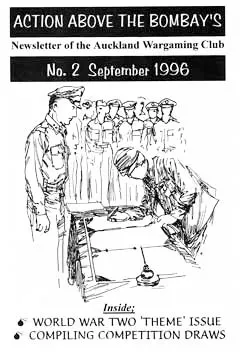In a preceding article Ion Dowman clearly demonstrates the correct way to run a Swiss Draw tournament. One of the important factors in the Swiss system is the “Pairing” of opponents, and consequently how participants are ranked based on their results during the tournament. I would like to make some further observations and comments on this.
An issue that I personally consider significant is whether a Win is of greater value than two Draws? I believe it is, the reason being the artificial constraints imposed by the tournament environment which prevent all games from reaching their natural conclusions. This effectively means those players who are slow (whether intentionally, or unintentionally), who use the Fabian tactics Ion alluded to, or who compete without a reasonable knowledge of the rule set being used can often end up ranked in the middle of the field at the conclusion and having won perhaps only one game! While those who play to complete their games in the time allowed (and perhaps win two games in 6 rounds) are effectively penalised in comparison!
Now I hear you thinking “what’s he on about…?” Well it’s this; Player A competes in 6 rounds, finishes all his games and wins two. He has 2 points. Player X competes in 6 rounds, finishes 3 games and wins one. He has 2½ points. X has finished higher than A because he failed to complete all his games! Is this fair? I believe it is not. The obvious argument is to rank people by Win/Loss, i.e.. Rank everyone by Wins, and where more than one person has the same number of wins they are then ranked by the least number of losses (or most number of Draws if you like), so A is higher with 2 Wins than X with only 1 Win. X with 2 losses will rank higher than anybody on 1 Win who has more Losses (or less Draws) so he still receives some benefit from the uncompleted games, but he won’t be able to win the tournament.
Taking this a step further, if after 4 rounds somebody has moved out to a two win lead (i.e.. 2 points) then under the points system they cannot lose even if both their remaining games were losses! Meaning that Fabian tactics become very viable. However in the Win/Loss system other players could still win by winning both remaining games if the 4th round leader were also to draw or lose both remaining games. This would make the players adopt much more aggressive attitudes towards their games and would greatly reduce negative strategies and tactics (like time wasting, or excessively defensive postures), especially in the final round of a competition. And after all there is nothing exciting about a climactic end to a competition that bogs down with negative and unsporting play.
The obvious counter to this argument is that the “innocent” opponent of such people would also be penalised by this. However the idea behind this is to discourage, and hopefully eliminate this, so there should not, in the long run, be players suffering from this to start with! And those that do can perhaps be held equally responsible, although I would like to see umpires make a tough decision on this and penalise those that are guilty of these tactics. This would again provide more incentive for players not to adopt them.
Moving along to DBM tournaments here is a classic example of where there is not the correct system being used. The DBM VPs, from a mathematical point of view are specifically designed for Round Robin systems, while the definitive Victory determination is ideal for Knockout or Swiss. To use the VPs for the two latter systems is wrong. This again encourages poor play and on the statistical side will favour tactics like “I can’t win so as long as I kill the enemy C-in-C’s command then it’ll be like getting a draw”! The results of the VP system are not based on whether you win or not, simply the damage you cause your opponent! I for one cannot see the justification of such an unequal scoring system. As a final note, the 1994 Nationals saw the first DBM competition use a Win/Loss scoring system and by tradition set a precedent, which the subsequent two National competitions have ignored. It is interesting to note that in 1994 the player who scored the most points did not win the competition, and the third highest scorer finished 9th! This clearly demonstrates how use of the VP system for Swiss or Knockout competitions is wrong. The player above who would have come third on VPs won only Two games, but under the VP system he would have finished third, beating six competitors who won more games!
As a final note, and in answer to the many who go “but Phil says to use the VPs…” I would point out that he is referring to competitions generally, that he makes no allowance for draws caused by lack of time, and finally that he specifically refers to “Swiss Chess” tournaments separately after discussing the VP system. The fact that he refers to “large Swiss Chess…a tie may occur” also suggests that he is not referring to the VP system, as a draw would be highly unlikely in this situation, it would be a lot more likely using a Win/Loss system or the points system mentioned in Ion’s article!
I hope this has prompted some thought on the subject, perhaps someone else would like to write in with their opinions, and we can get some communication flowing on competition draws…
by John Moher – AATB No.2 September 1996.

